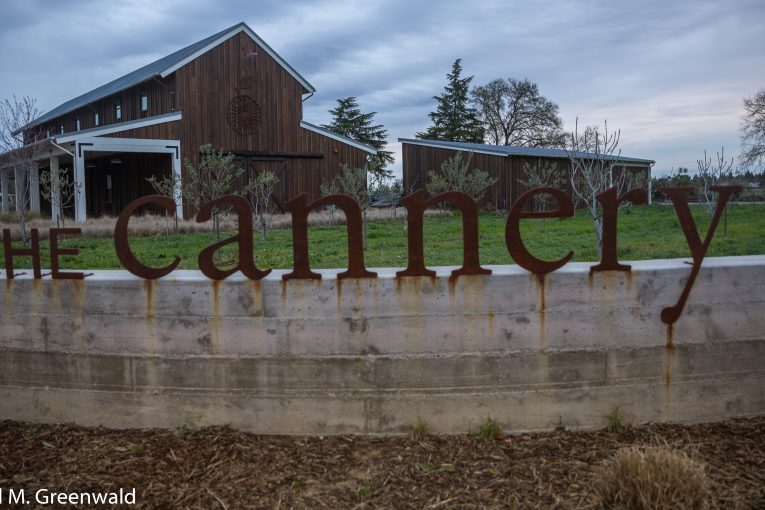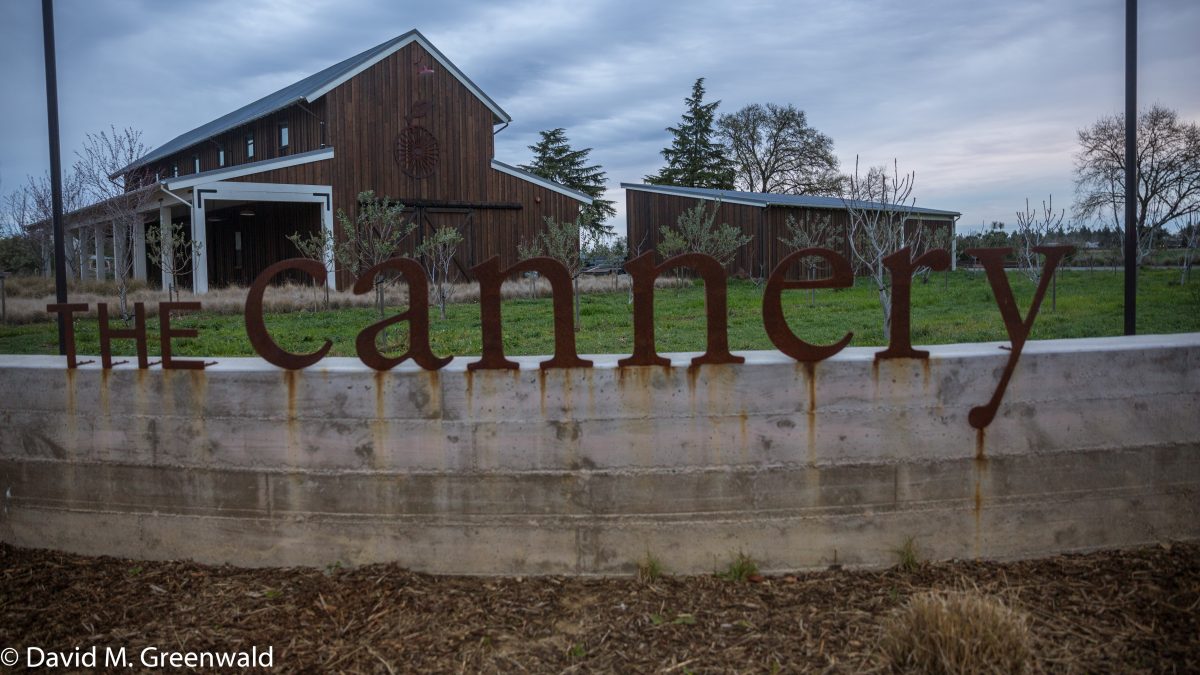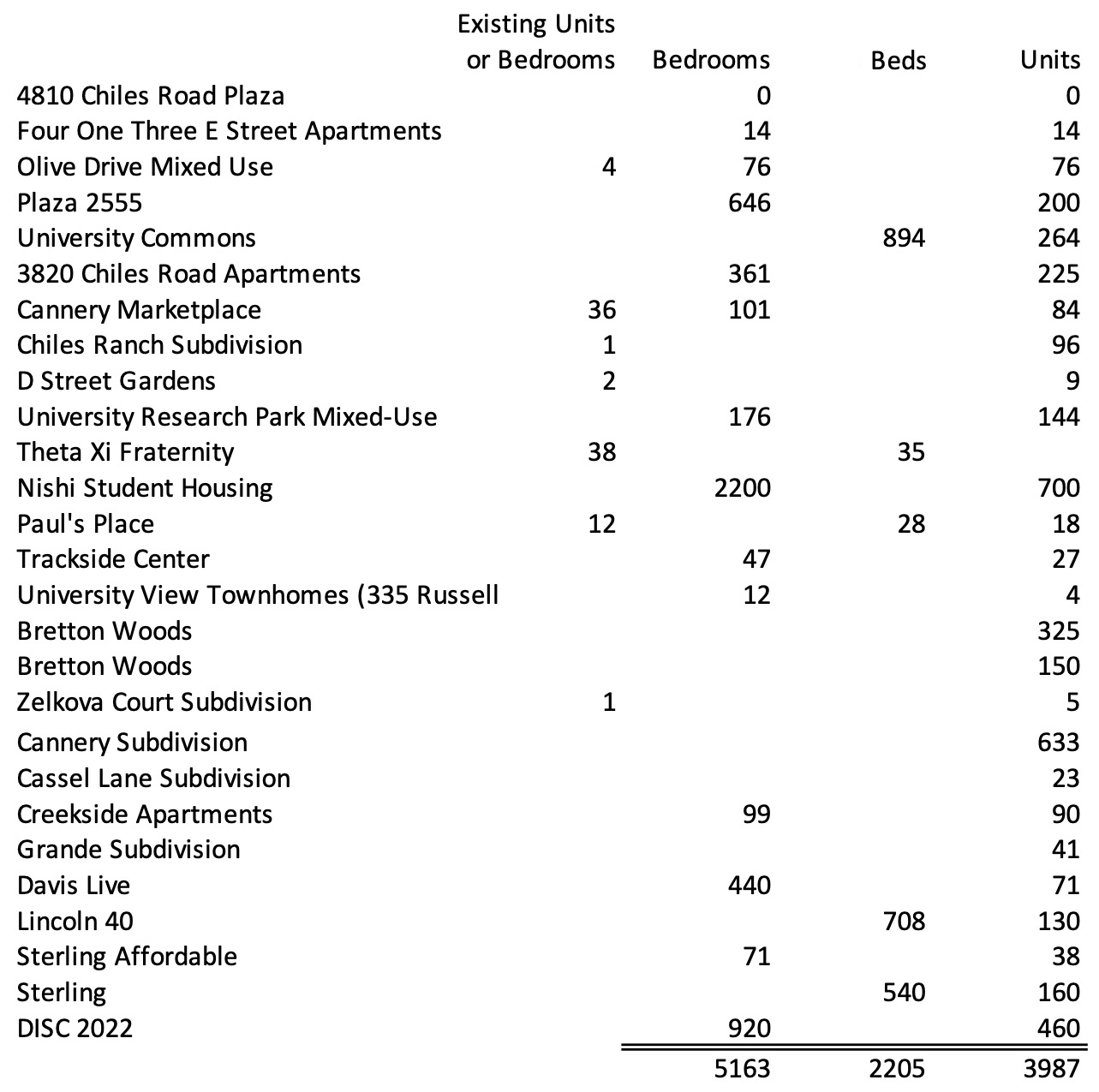

By David M. Greenwald
Executive Editor
Davis, CA – It’s hard to get housing approved in Davis, and even formal approval, often sees barriers – for instance voter requirements and lawsuits. As noted in earlier columns, this environment for development in Davis will make it difficult for the city to meet its state requirements for affordable housing.
The fact that HCD is already starting to crack down on NIMBY cities should be a message that Davis should pay attention to.
As an LA Times editorial pointed out, HCD is reviewing San Francisco, and if the review finds that San Francisco is breaking state law, “details about the violations will be sent to the state attorney general’s Housing Strike Force.”
The Times notes, “The result of all this work could be legally enforceable commitments to improve San Francisco’s processes and boost housing production, such as streamlined reviews and deadlines to approve projects.”
One of our readers posted a long list of approved projects and argued, “Unlike San Francisco, recent history shows us that Davis does not have a process problem for the approval of projects.”

It’s an interesting point, but is it indicative that Davis doesn’t have a problem or that the state won’t step in if the city doesn’t have the exact same problem?
It’s not that Davis doesn’t have a process problem.
One of the points made by Matt Kowta back in 2018 with respect to the Downtown Plan and the feasibility of building mixed use in the downtown.
BAE which did the proforma and Matt Kowta argued, the city can take steps to reduce time and risk for developers. They can do this by providing clearer planning guidelines, limiting discretionary decision-making, clearing the way for environmental approval through a Specific Plan EIR, providing a fast-track path to entitlements, and following through with streamlined and efficient building permit and inspection procedures.
Matt Kowta noted, “This is the one we really heard over and over again in the public stakeholder meetings.”
This is not exclusive to Davis, but clearly, the analysis suggests that there is a process problem.
I would argue that listing a bunch of projects isn’t data analysis and what was posted doesn’t actually show that Davis doesn’t have a process problem.
One key point is that the list is somewhere around 25 long – but the projects extend back to at least 2008. Moreover, a large percentage of these have not been built. While we can probably assign developer blame at least partially to Chiles Ranch, the voters blocked DiSC 2022, University Commons might never build housing, and Trackside was thwarted by a lawsuit and now will have to change owners before it gets built.
The list dump, ignores a finer analysis. There’s a huge difference of course between a small redevelopment project like Paul’s Place, heavily leveraged by grants and donors and a large subdivision.
Let me walk through a few hurdles here to illustrate some of the problems with simply listing projects.
University Commons was an infill approved by the city, however, there was fierce neighbor pushback which led to a 3-2 vote by the council which was compromised enough to perhaps make the project unbuildable as approved. So is that a process win?
Trackside was derailed by a lawsuit, but you can also argue that the city did not help things not only by approving a project that was out of step with its design standards, but with out of date city codes and Core Area Specific Plan.
Bretton Woods broke ground last month, but even with a relatively straight forward process it was five years from planning to breaking gound.
Cannery is mostly build (ironically it is listed twice – Cannery Marketplace and Cannery Subdivision) – it took a lot time and still nearly ten years after approval it is not fully built out.
Grande is an interesting call for arguing the city processes work. The reality is that the school district turned Grande into a quagmire, the first proposal for a project there did not fly and then the district got smart and worked with the community to craft a workable design. But that process took well over a decade.
Creekside took nearly 20 years after the approval and buildout of Mace Ranch to even be approved.
Lincoln40 had full approval of the neighbors but was still delayed by a lawsuit.
Nishi had several iterations that failed including a defeated Measure J vote. It finally became the first Measure J project to pass, but because of voter requirements for a grade separated crossing, that has delayed final approvals.
And of course, DiSC 2022 will not be built because of the Measure J requirements for voter approval.
So you have a list of project – listing affordable and market rate parts separately, some of these projects took years if not decades to actually break ground and open. Some will never be approved.
In my opinion at least, I don’t think this shows that the Davis development process works particularly well – in fact, just the opposite. Some projects have been approved, not faced votes or lawsuits, and have been built and open. But a high percentage have not.
The state may well look at the Measure J process and will certainly scrutinize the next two Housing Elements to see if the affordable housing is even plausible. It remains to be seen whether we see the state step in further.







Are you claiming that there was an application on file for 20 years, just waiting for approval? (I don’t think so.) These types of subsidized developments are dependent upon government funding.
When, exactly – was it first proposed? And, how long afterward was it approved?
As I recall, the zoning to accommodate the proposal that finally arose was actually densified to allow it. (The resulting building actually looks pretty nice – better than most of the recent approvals.)
In regard to your ongoing series of “chicken-little” type articles regarding Davis’ housing element, I suspect that you’ve already seen this:
https://www.davisenterprise.com/news/local/hopes-raised-for-state-certification-of-citys-housing-element/
OOPS!
I sincerely hope HCD changes their mind about approving Davis’ Housing Element. Even approved projects take forever to get built and opened!
It’s been around 20 years since Spring Lake was first proposed, and it’s still not built-out. (Of course, things ground to a halt during the last downturn – with values dropping like a rock – the same direction they’re heading in, now.) You can’t force builders to build in that type of environment – they’ll just wait it out, as they’re already starting to do across the entire country. They’re not going to build for the purpose of losing money.
And it’s been (probably 5 years) since the Woodland Research Park was proposed, after failing in Davis without even reaching voters. (Though it’s really only a portion of the original development team who “moved” the proposal to Woodland.) Who knows when they’ll start building that (and its 1,600 housing units – on land that was previously-zoned for commercial only).
And by the way, still no word on any commercial tenants there, either.
Is this being “counted” as a housing development, at this point? Despite the housing shortage it would have created (if the commercial was actually viable)?
A more interesting inventory is what hasn’t been built since the passage of Measure J 22 years ago.
Of course the list of what was proposed and rejected would include thousands of homes without speculating on what wasn’t proposed by those unwilling to try to navigate the indignity of been trying in Davis.
Which would have to be added to the list of projects that were never proposed due to our misguided Affordable Housing Ordinance that effectively made apartment construction non-viable. When it comes to maintaining our exclusivity, we have found many ‘virtuous’ ways to justify keeping others out.
David, that is not a process problem. It is a standards problem. A jurisdiction’s standards flow from its General Plan, and as you and many, many others have pointed out, Davis does not have a General Plan that is either up-to-date or compliant with State of California regulations. As a result, by law, Davis can not process any application that adds to the population of Davis as anything other than a “General Plan Exception.” That means no “ministerial” handling of applications that are put forward “within the rules” … no fast-track, no medium speed-track, not even any slow-track. The only alternative available by law is precisely the kind of “discretionary decision-making” that Mat Kowta tells us that we should avoid/remedy.
The interesting thing to note about Kowta’s advice is when they were provided to the City. I believe it was more than three years ago now. And what has our City leadership done to act on that advice since it was received? Nothing!
Actually that is not completely correct. The City has delayed the starting of the needed General Plan Update by another two years. As a result the dysfunctional environment that Kowta advised us to remedy remains in place unchanged.
——————
With all the above said it is worth noting that in the ten-year period from 2011 through 2020 (as reported by the City to the State Housing and Community Development department (HCD). Davis added 1,797 housing units to its 2010 base of 24,873 housing units (households), which is a 7.22% increase. The population increase of Davis over that same 10-year period as reported by the US Census was just under 1.87%. So, kudos to the staff members of the City of Davis Community Development and Sustainability department for managing the City’s dysfunctional process so productively in spite of the obstacles. Their efforts to add housing units to Davis far outstripped the actual additions to the population.
.
There is no such thing as “a process win.” University Commons submitted a project plan, jumped through all the hoops, and had their project approved by City Council. They successfully made it through the many steps of the process and came out of it with a project they can move forward on.
The fact that they have chosen not to move forward isn’t a result of anything in the process. It is the result of changes in the financial marketplace. The City does not control external factors like the financial marketplace. Further, as the Chiles Ranch situation clearly shows, the City does not control the discretionary decisions of developers.
Developers make their own decisions, as the developers of the Mace Ranch Innovation Center clearly did back in early 2016 when they suddenly, and without warning notified the City that they were pulling their application.
I disagree… if the process is knowledgeable, transparent, professional (no personal biases), fair, and timely, that is the definition of a “process win”… I always sought those wins… some do not…
A “process win” may result in a denial, or an approval… there can be no “process wins” when it is all held to a vote, at the “end” of the process, that is not likely to be “knowledgeable, transparent, professional (no personal biases), and timely”… IMNSHO… it makes it a JeRkeD process… no winners…
Bill, for the most part I agree with you. Where we differ is whether the Election day vote is within the process or after the process. I personally believe the process ends when the City Council votes to put the project (that has come through the process) on the ballot. Staff’s job (within the process) is to use all their knowledgeable, transparent, professional, fair, and timely skills and efforts to put the best possible project on the ballot. After they have done that, the process is completed, and the fate of the project is out of their hands.
Matt
The electoral or Council vote at the end is part of the process to be negotiated. The staff has but one part in that process, e.g., the commissions have their parts as well.